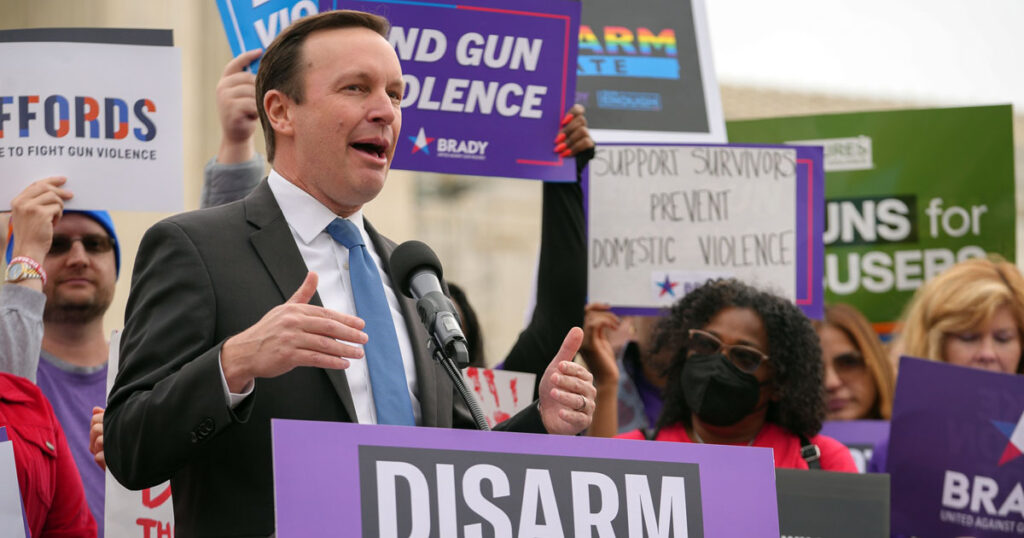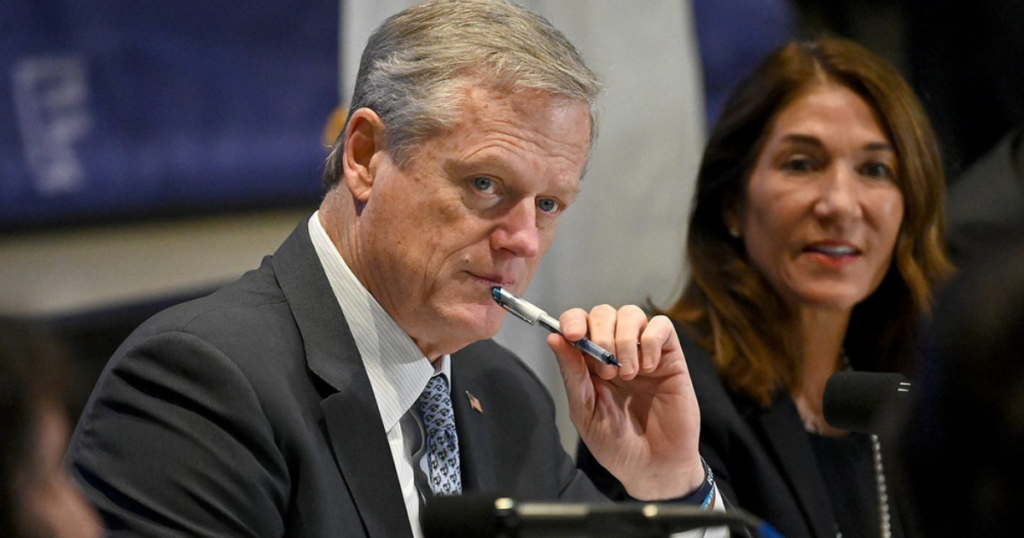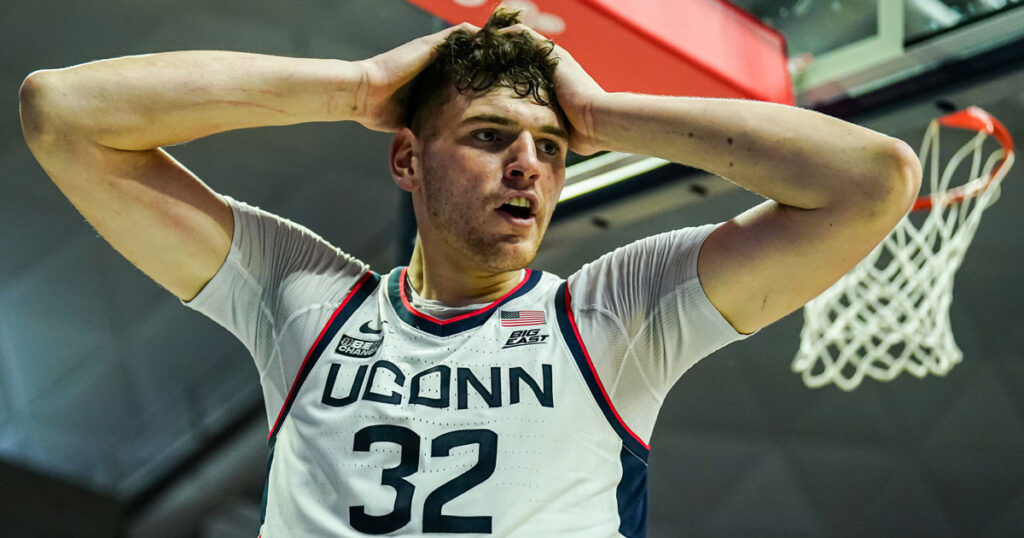Why NCAA unveiled its reform proposal now is crystal clear: The writing is on the wall
One leading college sports administrator recalls the exact time he learned the news – 9:52 a.m. ET. Another was driving and had to come to a full stop to digest the magnitude of what he was told.
The NCAA’s bold, progressive proposal – which would for the first time enable schools to directly pay athletes – sent shock waves through an entire industry Tuesday morning. Several leading stakeholders, including conference commissioners, told On3 they were caught off guard, some feeling blindsided.
An inordinate number of questions await. Far-reaching consequences are innumerable. And mere implementation of the plan – much less when it would take effect – is anything but a certainty.
As NCAA President Charlie Baker himself said, “It’s a starting point.”
It’s also very much not on-brand for an association carrying an enduring reputation of being a rigid, unyielding association. So the overarching question: Why did Baker unveil the potentially groundbreaking proposal now – much to the surprise of many industry stakeholders?
That is at least one answer that is clear, or as the line from “A Few Good Men” goes: How clear? “Crystal.”
The NCAA sees the writing on the wall.
It’s there for all to see. The association faces a perpetual threat of litigation – two lawsuits were filed against the NCAA within hours on Thursday alone. It could already be on the hook for as much as $4.2 billion in damages from one antitrust suit. A potential landscape-shifting employment train is also barreling down the tracks.
The NCAA is in search of a lifeline. This was their best attempt to get the attention of Congress. It shows lawmakers that it is working on a forward-thinking new model; it is a step forward, what they hope will be viewed as a good-faith effort to reform. The NCAA wants some antitrust protection and a formal designation that athletes are not employees.
And it believes it needs it fast because the winds of change are now howling – louder and more fierce than ever.
At Wednesday’s Sports Business Journal Intercollegiate Athletic Forum, Baker urged for “urgent patience” regarding the work needed to bring his proposal to fruition.
Baker wants to create a new subdivision – comprised of institutions with the highest resources that can then craft their own policies, perhaps entirely separate from other Division I schools. Inclusion in that subdivision, Baker says, should require that schools invest in a trust fund of at least $30,000 per athlete annually, which would be paid to at least half of the school’s athletes.
Baker proposes that rules should change for any Division I school, of their choice, to enter into name, image and likeness licensing opportunities with their student-athletes.
There’s a lot to untangle from the plan, what it means and what it doesn’t mean – as well as what’s the next shoe to drop.
For some clarity, here are five important questions and answers:
Does the NCAA still need Congress?

The NCAA remains steadfast that Congressional help is essential. The association faces mounting legal threats by the day — lawsuits are now coming fast and furious.
Industry leaders like Big East Commissioner Val Ackerman believe the NCAA is “paralyzed” from passing and implementing rule changes because of the perpetual fear of litigation. American Athletic Conference Commissioner Mike Aresco believes lawyers nationwide now circle the NCAA acting like kids in a “candy store.”
So the NCAA remains in aggressive pursuit of at least some antitrust protection and a formal designation that athletes are not university employees. There’s plenty of reason for trepidation among those concerned about an employee model.
In Pennsylvania, plaintiffs in Johnson v. NCAA, former Villanova football player Trey Johnson and other Division I athletes are asking that athletes be deemed employees subject to the Fair Labor Standards Act. A Boston-based NLRB regional director is weighing the question of whether Dartmouth men’s basketball players are employees and can conduct a union election. Plus, a hearing in Los Angeles will begin Dec. 18 regarding the NLRB complaint against USC, the Pac-12 Conference and the NCAA, which alleges respondents unlawfully misclassify football and men’s and women’s basketball players as student-athletes.
There is movement in Congress. Just on Wednesday, U.S. Senators Chris Murphy (D-Conn.), Bernie Sanders (I-Vt.), and Elizabeth Warren (D-Mass.) reintroduced the College Athlete Right to Organize Act. That bill would affirm that college athletes are employees under the National Labor Relations Act who are entitled to the right to organize and collectively bargain for fair compensation and better working conditions.
None of the flurry of draft bills that have circulated over the last year has even gone to a vote. Whether one can ultimately pass – especially during an election year – is anyone’s guess. But the NCAA is aggressively – perhaps desperately – seeking the lifeline.
Baylor President Linda Livingstone said during the SBJ conference: “If Congress sees us saying, ‘Hey, we want to benefit them [athletes] more financially, but we believe keeping them from being employees helps us to support them in different ways and maybe better ways,’ I think we might be able to get some of that protection that probably we won’t get otherwise.”
Is the NCAA proposing revenue sharing?
No, not in the sense that most interpret the often-discussed “revenue sharing” term.
Broadcast rights revenue continues to escalate, proving to be the fuel to the conference realignment crazy that unfolded over the summer. And College Football Playoff expansion, from four to 12 teams, is expected to generate some $1.4 billion in new revenue annually, according to the Knight Commission on Intercollegiate Athletics. As of today, the athletes on the field won’t receive a slice of the TV revenue pie.
During the SBJ conference, Baker said that his proposal does not green-light revenue sharing of TV dollars.
Time will tell how long the powers at be can withhold that pie from the athletes. One of the central issues that U.S. District Court Judge Claudia Wilken – herself no sympathizer with NCAA arguments – is weighing in the landmark House v. NCAA antitrust case is whether thousands of athletes in damages classes should receive a slice of the broadcast revenue pie. Overall what’s at stake in the high-stakes case is some $4.2 billion in damages that the NCAA and power conferences could have to pay thousands of athletes in retroactive NIL pay and broadcast revenue.
What the NCAA proposal details is that if you want to compete at the highest level, you need to join a new subdivision and allocate – at the bare minimum – some $6-10 million annually to at least half of the student-athletes at the school. The true upper crust of schools could surely pay more than that, thus giving them even more of a recruiting advantage.
How many Group of Five schools could – or would – choose to allocate that amount of money to its athletes just to be in the cool kids’ subdivision? There is plenty of angst – and shock – over the proposal in the G5 football and mid-major basketball ranks.
What are pros, cons of moving NIL in-house?

Some stakeholders believe this is long overdue. Others remain steadfast that third-party collectives should, at least for now, continue in their current role.
“Some people are going to say you’re going too far, and people will say but you’re not going far enough,” Baker said during the SBJ conference. “I promise you that’s going to be where most of the dialogue on this will be in the short term.”
Top 10
- 1New
Kewan Lacy
Rebels RB decides on future
- 2Hot
Nebraska QB dominoes
Huskers line up multiple visits
- 3
Kenny Minchey
Flips transfer commitment
- 4Trending
Portal Predictions
Predicting transfer commitments
- 5
Bryce Underwood
Decides on Michigan future
Get the Daily On3 Newsletter in your inbox every morning
By clicking "Subscribe to Newsletter", I agree to On3's Privacy Notice, Terms, and use of my personal information described therein.
The case for bringing NIL activity in-house and under schools’ umbrellas is that it would address donor fatigue. Donors over the last two years have been constantly pulled in two different directions: helping athletes through NIL deals and assisting the athletic department’s fundraising efforts. This would enable all parties to row in the same direction, sources said.
It would also eliminate any questions over whether Title IX applies. With NIL activity in-house, Baker asserted in his letter, schools need to ensure they are Title IX compliant by awarding comparable financial benefits and opportunities to male and female athletes.
Others disagree. Ensuring Title IX compliance in a competitive marketplace is easier said than done, sources said. Others point to increased liability risks for schools with NIL activity formally under their purview.
North Carolina Athletic Director Bubba Cunningham told On3 before the proposal was unveiled that he opposed bringing collectives or NIL activity in-house.
“Universities are not prepared to bring collectives or other elements of NIL in-house,” Cunningham said. “There are too many unanswered questions about employment, compensation, antitrust, Title IX and Title VII that must be considered.”
How many questions remain?

Countless.
How many schools would be in the subdivision? Baker ballparked the club at including 100. There are 133 schools in the FBS. Be left out and you may as well consider it a death knell regarding competing for a national title. But if you’re in, there’s still no guarantee you can keep up financially with the big boys.
What happens to elite men’s basketball programs outside power leagues? UConn won the national title last year. Marquette is also a top-10 team this year. Gonzaga is a perennial national contender. Can they afford to join the subdivision? Can they afford not to join it?
Importantly, athletes could spend the trust fund money any way they choose, and there is no limit on how much schools could provide any subset of athletes – as long as schools remain Title IX compliant. Will there ultimately be a salary cap as well as the $30,000 floor – should there be?
If this proposal is adopted, the gap between the haves and have-nots will grow to roughly the width of the Pacific Ocean. Expect whispers to grow louder that, at that point, the elite subdivision should simply stage its own championship postseason basketball tournament. That would mean goodbye to mid-majors and low-majors, upstarts and great stories like St. Peter’s and College of Charleston, and goodbye to the prime ingredient that has made March Madness an incomparable American treasure for decades.
When could this plan, or a version of it be implemented? If it follows the usual slow-moving path for NCAA policy changes, probably no earlier than early 2025. It’s doubtful membership could move quickly enough – given myriad complexities – to adopt a plan during next month’s NCAA Convention, right? Then again, desperate times call for desperate measures.
And Baker said by this time next year he wants to have addressed what he termed as “the elephant in the room.”
What’s next?
For Baker, two words: Consensus building.
A deft politician, Baker knows this game. He has rightly earned strong reviews during his first year of stewardship for being earnest and unpretentious, down to earth and reasonable. He has said for a while that the upper echelon of college sports needed to be addressed – that they exist in a different stratosphere in some respects – and has been consistent that student-athlete interests are his core tenet.
Several sources said it’s possible that Baker arrived in college sports five to 10 years too late to stop the employment train and a truly professionalized world. Time will tell.
This is an enormous challenge.
Not only are there countless details that need to be hashed out and questions to be answered, but membership – at least from two days of reporting – is all over the map on the proposal. Some believe this would signal checkmate for mid-major conferences, thus plummeting many sports to Division II, III or club level. Others want to go full-throttle revenue sharing now.
Baker wants to ignite industry-wide dialogue and debate over the proposal. That spirited dialogue is well underway.
But the clock is ticking.
Congress is fast approaching the throes of an election year, so the window for even having a puncher’s chance at securing some antitrust protection and codifying athletes as non-employees is growing more narrow by the day.
And hovering over everything is the employment question, which will be answered by the courts and the NLRB in the coming months and beyond. If your jaw remains agape at the NCAA’s proposal, just consider how radical an employee model could be.
If that is ushered in, you ain’t seen nothing yet.
The NLRB’s Los Angeles regional office will conduct an in-person hearing regarding the USC, the Pac-12 and the NCAA case beginning Dec. 18 – witnesses and all.
Buckle up, plenty of turbulence ahead.